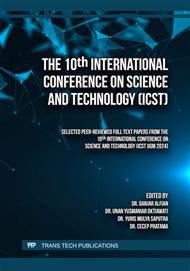p.380
p.393
p.403
p.413
p.425
p.437
p.452
p.459
p.471
Moving Zone Clustering for Device-to-Device Users Based on Binary Message Passing
Abstract:
The ultra-rapid mobility of cellular device-to-device (D2D) users degrades network connections and enhances renewal interconnection issues, eventually lowering the overall throughput performance. Moreover, a limited cellular infrastructure in rural areas hinders smooth network communication, leading to massive network outages and disconnections. Therefore, to maintain high data reception, the users require a safe moving zone, i.e., an area where the performance degradation is still tolerable. However, determining the safe moving zone of D2D users is categorized as a nonlinear problem that magnifies solutions into combinatorial possibilities. Based on that challenging issue, this study proposes a binary message-passing method to cluster safe moving zones by finding the minimum pathloss. The messagepassing technique splits the centralized D2D issues into local cases involving only adjacent D2D users. By enabling a distributive manner, the proposed algorithm determines the moving zone with low computational complexity. The evaluation results show that the proposed algorithm provides a higher homogeneity and completeness value than conventional clustering techniques, indicating a clustering model’s high fitness. The simulation result demonstrates that the proposed algorithm only requires 29 iterations with a high homogeneity of 0.727 and completeness of 0.752, Moreover, the proposed algorithm outperforms D2D conventional techniques regarding pathloss degradation. For 25 numbers of the dataset, the proposed algorithm only experiences 59.52% data loss, which provides more efficient performance than K-means and color graphs that correspond to 60.94% and 61.97%.
Info:
Periodical:
Pages:
425-434
Citation:
Online since:
October 2025
Authors:
Keywords:
Price:
Сopyright:
© 2025 Trans Tech Publications Ltd. All Rights Reserved
Share:
Citation:


